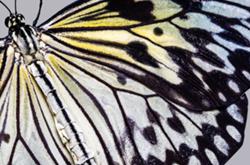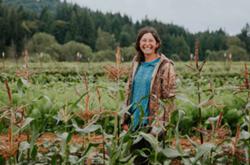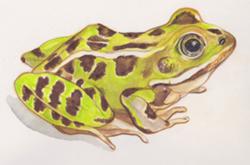[Editor's note: At Sea with the Marine Birds of the Raincoast combines the natural and human histories of Pacific Northwest marine birds with Caroline Fox's personal story of her life as a conservation scientist. Accompanied by vivid images, drawings and archival and modern photography, the book follows the author as she sails the coast, documenting marine bird diversity and seasonal shifts in community assemblages. Fox writes about some of the most fascinating yet poorly understood species, including albatrosses, puffins and cranes, and their historically complex relationship with human society.
The following excerpt describes some of Fox's time aboard the Achiever, a vessel operated by the Raincoast Conservation Foundation. Her mission was to gather missing information about birds and other wildlife in the path of oil tankers along the B.C. coast should the Enbridge Northern Gateway pipeline be approved. At Sea with the Marine Birds of the Raincoast by Caroline Fox is published by Rocky Mountain Books.]
Just north of Prince Rupert, the foul spring weather that has restricted us to the mainland inlets finally breaks, allowing us to begin the first transect that veers offshore. The Achiever's diesel engine grumbles awake at an unfortunate hour, and we untie from still-sleeping Prince Rupert, slip past the moored cargo vessels and head for the open seas. We make a jagged course as we wend through the outer coast islands and align ourselves to cross the Dixon Entrance and finish at the northwestern corner of Haida Gwaii.
The sun comes up, glimmering in a line of fire above the Coast Mountains of the mainland and lighting up the bellies and pale underwings of gulls. Just like that, our transect into the great blue yonder begins. With the light at my back, birds appear on the water before me. Overhead and all around, a steady stream of migrants continue to flood north, while lines of rhinoceros auklets and common murres, loosely grouped and flying, make their way to foraging grounds farther offshore. The number and diversity of gulls I encounter are staggering. And still more gulls appear, casting us a discerning glance and then casually veering away.
In early April, British Columbia's coastal waters are clear from a long winter with insufficient sunlight for phytoplankton, which are miniscule, floating, photosynthetic organisms, to do much of anything but hang tight until the days lengthen. But we're right on the verge of spring; in the nearshore, young kelps grow slowly toward the light, soon to accelerate with a burst of growth to become the thick, lustrous, kelp forests that fringe the coast. Any day now the ocean will show its first blush of colour when the year's first phytoplankton bloom begins.
Usually the first phytoplankton to let loose are the diatoms, which are microscopic, jewel-like organisms that turn the sun-filled upper layers of the ocean rusty brown. Some years, coccolithophore blooms follow the diatoms, and the ocean's upper layers bleach an opaque, milky white. Often proliferating over vast areas of the ocean, coccolithophore blooms may be monitored by satellites. Drifting about the surface of the ocean, these organisms soak up sunbeams and carbon dioxide to produce life-giving oxygen and carbohydrates. Combined, these phytoplankton account for about half the planet's primary production, largely via the process of photosynthesis.
Fueling much of the coastal marine food web that supports upper-level predators like marine birds, mammals and human fishers is an ocean current that upwells cool, nutrient-rich water along the uneven, jumbled continental shelf break. From the east, a current called the North Pacific West Wind Drift crosses the Pacific Ocean and bifurcates along the British Columbian coast. It then splits to form the Alaska Current to the north and the California Current to the south. In the middle lies a broad, variable, transition zone, which encompasses much of the British Columbian coast.

We are not more than a kilometre out from the mainland and already the marine birds that are more tied to land, such as the bald eagles and northwestern crows, fall away. For the first time this spring, we finally enter pelagic waters. The water out here looks and moves differently, and as we cruise westward, the sea floor drops away and the swell begins to build.
Earlier in the voyage, my brief experience with rough seas had left me nervous about the offshore crossings. On the first day of bad weather several weeks earlier, when rounding Cape Caution, the gateway to the Central Coast, I had found myself clutching the Achiever's stern railing, breathing fresh air and fixating on land.
The talented crew, my companions on this two-month voyage, probably wouldn't appreciate my impression of a northern fulmar. When threatened, fulmars are known for oil-spitting, which is the projectile vomiting of the oily contents of their stomachs. At the time, these pelagic birds were farther out to sea, hidden deep in the thick cloud, while I struggled with an urgent need to quell the heaving seas within me. Just when it became too much, and my inner fulmar began to well up inside me, we reached Fitz Hugh Sound, where the rolling swells from the open Pacific Ocean -- and my stomach -- were calmed.
Tears of the Albatross
Out in the rough waters off the North Coast, my seasickness seems a thing of the past. Still within sight of the rocky headlands of the mainland, the bird community abruptly shifts and we enter the waters of the tubenoses, a term that refers to the birds that belong to the order Procellariiformes, which includes albatrosses, fulmars, shearwaters and storm-petrels. Tubenoses, as the name suggests, have bulky nasal passages atop their bills that are primarily used for olfaction. Among the most pelagic of marine birds, many tubenosed species use their sense of smell to find patchily distributed prey in variable marine environments and to navigate their way across the seas. Equipped with glands at the base of its bill that filter salt out of its bloodstream, a tubenose doesn't require fresh water -- a handy adaptation for birds that come to land only to breed. The concentrated salt, in the form of brine, then drains along their bills and drips back into the sea as the "tears of the albatross."

Before I'm even accustomed to this new, extra-blue world, I sight a member of the tubenose tribe. Sooty shearwaters, the dark, streamlined birds from southern seas with long, narrow and perpetually crooked wings, appear in the deepening seas ahead. At high-flight speeds and in growing abundance, I initially struggle to systematically detect, identify and count their number, but it soon becomes easier; the vast majority are sooties, with the occasional, and virtually identical short-tailed shearwater. Hours pass in their buoyant company, and just as I'm considering a short break, a dark mass appears in my peripheral vision.
Focusing my eyes now on the steep, pelagic-blue waves off to starboard, I see nothing but water. A few seconds pass before I glance again, and just as I do, a brown giant soars up and out of the wave troughs: a black-footed albatross aloft. Only a few metres above the rough seas, the bird makes a slight adjustment to its chocolate wings and is back down in the troughs, gaining speed, before roaring up and above the waves.
Closer now, covering a distance of at least 100 metres in mere seconds, it glides by our boat, directing a persistent, glossy-eyed gaze at me. With eyes that are all at once familiar and unfathomable, I find it easy to understand why sailors sometimes looked on albatrosses as the reborn souls of lost shipmates and as kindred spirits of the deep. ![]()
Read more: Environment

















Tyee Commenting Guidelines
Comments that violate guidelines risk being deleted, and violations may result in a temporary or permanent user ban. Maintain the spirit of good conversation to stay in the discussion.
*Please note The Tyee is not a forum for spreading misinformation about COVID-19, denying its existence or minimizing its risk to public health.
Do:
Do not: